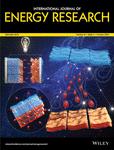Life cycle assessment of bioethanol production from Pennisetum sp. using fed-batch simultaneous saccharification and cofermentation at high solid loadings
Summary
Considerable progress has been achieved for the production of bioethanol from lignocellulosic biomass. However, increasing the substrate concentration has been shown to decrease ethanol productivity. Therefore, Saccharomyces cerevisiae (S. cerevisiae) and Pichia sp. were used for ethanol production from glucose and xylose sugars in the present investigation. Furthermore, coculture fermentations were conducted for 13 g/L of sugar (10 g of glucose and 3 g/L of xylose). It was further used for ethanol production from ultrasonication-assisted NaOH (UA-NaOH) pretreated and enzymatically saccharified biomass in batch and fed-batch fermentation conditions. Furthermore, fed-batch fermentation was used for separate hydrolysis and cofermentation (SHCF) and simultaneous saccharification and cofermentation (SSCF) in shake flask conditions. The highest ethanol production of 12.2 and 7.9 g/L was observed for fed-batch SSCF deenanath grass (DG) and hybrid Napier grass (HNG) (Palkonal MBW as the enzyme) biomass (80 g/L), respectively, in shake flask conditions. However, increasing the biomass concentration to 270 g/L produced an ethanol concentration of 77.6 and 51.3 g/L for DG and HNG, respectively, in fed-batch SSCF conditions in a bioreactor. Furthermore, nuclear magnetic resonance studies of the residual biomass of DG revealed lower carbohydrate content, demonstrating the efficiency of the fermentation strategy. Life cycle analysis of DG and HNG revealed DG had a higher yield as well as lower environmental impact than HNG. Thus, the fed-batch SSCF process can be considered a promising technique for biorefinery-based bioethanol production from Pennisetum sp. in the future.
Novelty Statement
For making lignocellulosic fuel ethanol economically competitive as compared to fossil fuels, it is important to achieve higher titers of ethanol from increased substrate concentration. But an increase in the substrate concentration decreases the ethanol productivity. In this study, the fed-batch simultaneous saccharification and fermentation produced higher titers of about 77.6 g/L ethanol even at higher substrate loadings. Besides, The LCA results demonstrated lower environmental toxicity, indicating the efficiency of the pretreatment and simultaneous saccharification and cofermentation process.
Open Research
DATA AVAILABILITY STATEMENT
Data sharing is not applicable to this article as no new data were created or analyzed in this study.




